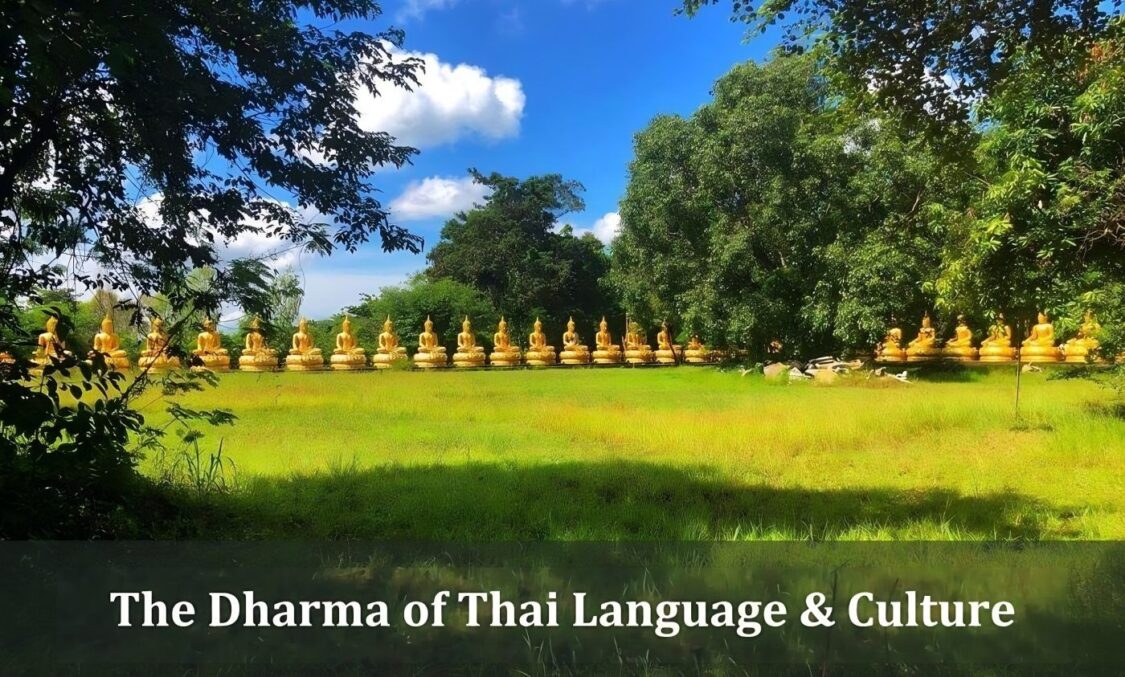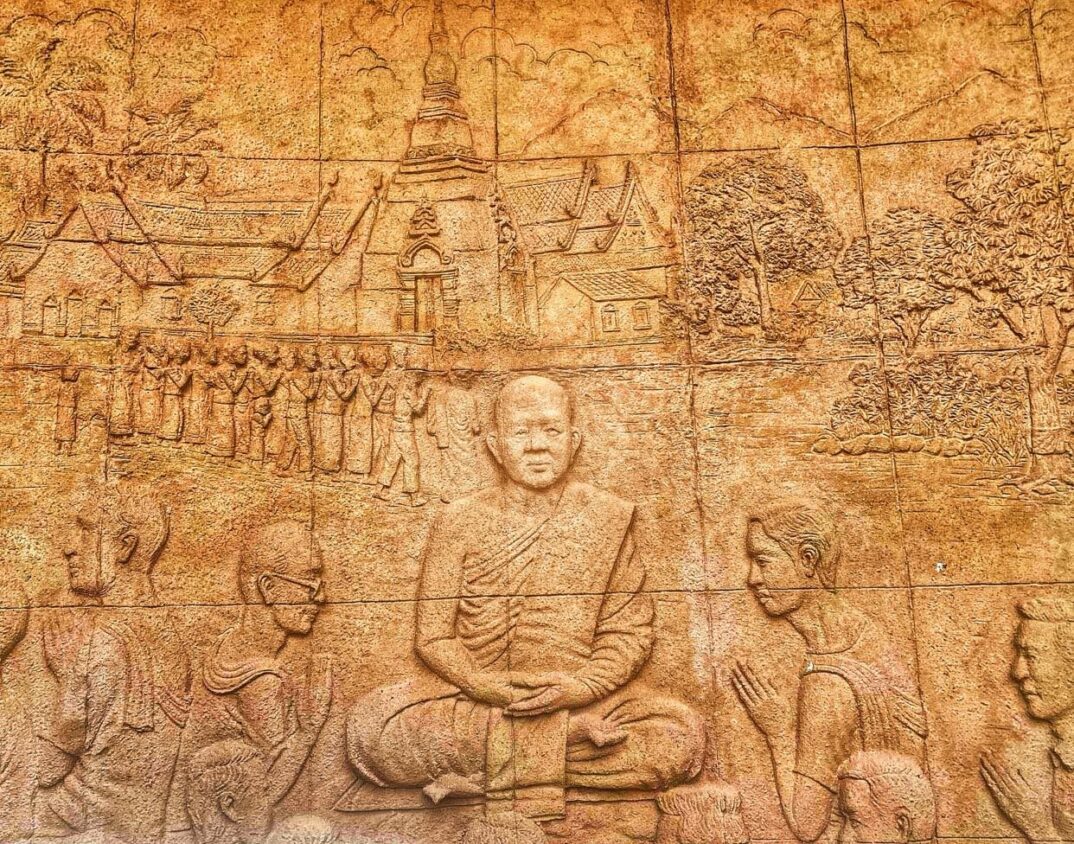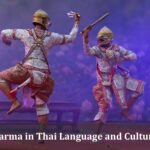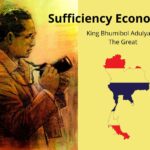The Hidden Dharma of Thai Language & Culture

The deep connection between the Buddhist culture of Thailand and the Thai language is illustrated best by the usage of “tham” (ธรรม), meaning dharma. While the word “tham” has additional meanings, such as justice, righteousness, normality, and lawfulness, these meanings always are intertwined with dharma — which refers to the teachings of the Buddha and the cosmic law and order of the world (as encapsulated in karma).
In the Thai language, the word “tham” (dharma) serves as a root word (a prefix or suffix) for many other Thai words, infusing them with a deep moral and ethical dimension, one where spirituality is interwoven with the mundane.
Understanding the use and significance of “tham” (ธรรม) is therefore not merely a linguistic exercise but a hidden key to appreciating how Thais perceive the world, and how this reality often is imbued with a spiritual resonance that guides behavior, societal norms, and personal relationships.
For example, the Thai word for nature and natural is “thammachat” (ธรรมชาติ). This combines “ธรรม” (dharma) with “ชาติ” (life/incarnation), implying that the natural world is more than just its innate physical characteristics. It suggests that nature itself follows a dharma, an inherent order and truth.
This view encourages Thais to have respect for nature (a manifestation of cosmic order) and to be good stewards. Thailand’s environmental conservation efforts and the everyday practices of living harmoniously with nature are deeply rooted in this linguistic and spiritual framework.
Similarly, the Thai word for culture, “watanatham” (วัฒนธรรม), combines “วัฒน” (development or civilization) with “ธรรม” (dharma). This indicates that culture is more than just the sum of artistic, social, and intellectual expressions of a society. It encompasses a moral dimension.
Thai culture is thus a reflection of the Kingdom’s collective efforts to align societal evolution with the principles of the dharma (also written as “dhamma”).
This alignment shapes Thai arts, social norms, and governance — emphasizing harmony, respect, and communal well-being over individualistic pursuits. It also explains the centrality of the Thai monarchy and the reverence for Buddhist monks, both seen as upholders of dharma in society.

The Concrete & Abstract Thai World
We can gain further insight into Thailand’s culture and language by looking at the Thai words for “concrete” and “abstract,” which are “rupatham” (รูปธรรม) and “namatham” (นามธรรม), respectively.
“Rupatham” (รูปธรรม) means a concrete object or fact. It is composed of “รูป” (form or shape) and “ธรรม” (dharma). The inclusion of “tham” (ธรรม) in this compound Thai word underscores the notion that even the physical and tangible aspects of existence are seen through the lens of dharma.
It suggests that material entities are not merely inert objects. They are imbued with an intrinsic order and ethical quality that aligns with the cosmic laws of Buddhism. This perspective influences how Thais interact with the physical world, attributing moral and ethical significance to the environment and material possessions.
It also serves as a reminder of the interconnectedness of all things, where physical forms are to be respected as part of a larger moral universe and considered in decisions about material consumption, environmental conservation, and even in artistic expressions which often aim to reflect deeper spiritual truths rather than mere aesthetic appeal.
Conversely, “namatham” (นามธรรม), which means an abstract or intangible quality, is formed by combining the Thai word “นาม” (name/term) with “ธรรม” (dharma). This indicates that abstract concepts, ideas, or qualities should also adhere to or be viewed as manifestations of dharma. In Thai culture, this extends to how values, virtues, and principles should be conceptualized.
“Namatham” is deeply significant in the way it suggests that ideas such as justice, honor, and morality are not just abstract ideals but tangible presences that align with the cosmic dharma.
This view affects how these concepts are taught, understood, and integrated into daily life in Thailand — with intangible qualities (like being “greng-jai” or helping others “save face”) often carrying weight and having real-world implications within the Thai societal framework.
It also is important to understanding Thai social interactions, governance, and education, where abstract values (like respect, kindness, and politeness) are often given concrete importance and are expected to be lived out as manifestations of societal adherence to dharma.
Together, “rupatham” (รูปธรรม) and “namatham” (นามธรรม) illustrate a Thai belief system where both the physical and abstract realms are deeply interconnected with and reflective of dharma.
They reveal a worldview that encourages Thais to perceive all aspects of existence, whether tangible or not, through a spiritual-ethical dimension — one which should guide individual behavior and collective cultural practices towards a harmonious balance.
The Thai Ideal vs. Reality
It must be emphasized that this entire discussion is about the Buddhist ideals which influence Thai culture, society, and personal relationships. There are of course negative forces, like greed, selfishness, and all their attendants, which impact Thai society at large.
However, the frequent invocation of dharma in the Thai language serves as a constant reminder (even if only on a subconscious level) of the ethical and spiritual dimensions of life. It helps to tamp down on base human tendencies, while pointing toward the paths that can lead the Thai people to both personal betterment and societal harmony.
- Affirmations in Buddhism & Thailand - June 7, 2025
- Speak Thai Naturally Without the Gymnastics - April 20, 2025
- The Best Learn Thai Podcast and YouTube Channel - April 10, 2025




